The Spinal Cord: Structure and Ascending Tracts
1/53
There's no tags or description
Looks like no tags are added yet.
Name | Mastery | Learn | Test | Matching | Spaced |
|---|
No study sessions yet.
54 Terms
What is the shape of the spinal cord?
Cylindrical in shape.
Where does the spinal cord terminate?
At the lower border of L1.
What surrounds the spinal cord?
The spinal cord is surrounded by three meninges: Dura, Arachnoid, and Pia.
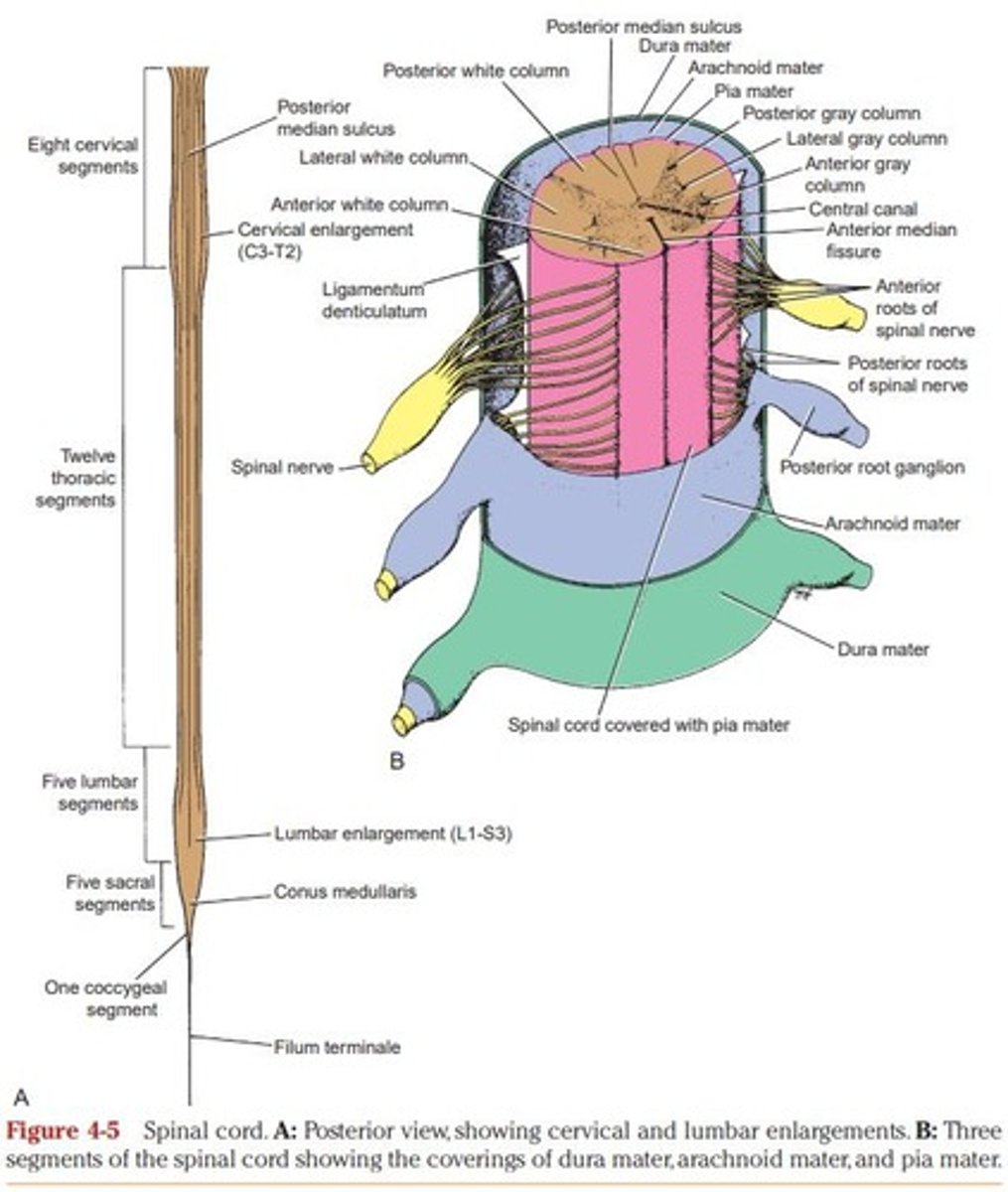
What nourishes the spinal cord?
Cerebrospinal fluid (CSF).
What is the conus medullaris?
The tapered end of the spinal cord.
What is the filum terminale?
A prolongation of the pia mater that descends and attaches to the posterior surface of the coccyx.
How many pairs of spinal nerves are there?
31 pairs of spinal nerves.
What are the two types of roots in spinal nerves?
Anterior (Efferent) roots and Posterior (Afferent) roots.
What is the structure of gray matter in the spinal cord?
It forms an H-shaped pillar with anterior and posterior gray columns united by a thin gray commissure.
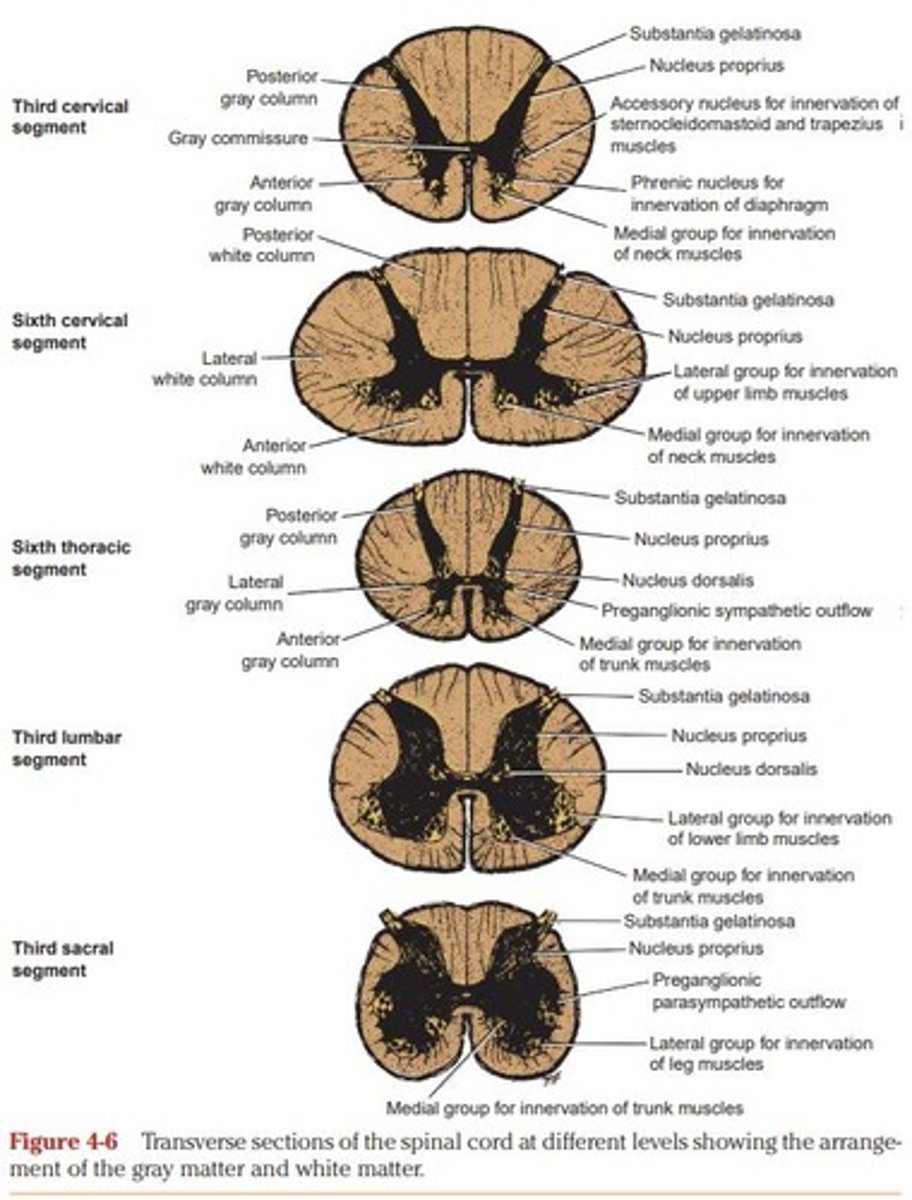
What are the three basic groups of nerve cell groups in the anterior gray columns?
Medial, Central, and Lateral groups.
What is the function of the medial group in the anterior gray columns?
It innervates the skeletal muscles of the neck and trunk.
What does the central group in the anterior gray columns innervate?
The accessory nucleus innervates the sternocleidomastoid and trapezius muscles.
What is the role of the lateral group in the anterior gray columns?
It innervates the skeletal muscles of the limbs.
What are the four groups of nerve cell groups in the posterior gray columns?
Two extend throughout the length of the cord, and two are restricted to thoracic and lumbar segments.
What is the substantia gelatinosa?
It is situated at the apex of the posterior gray column and receives afferent fibers for pain, temperature, and touch.
What is the nucleus proprius?
Located anterior to the substantia gelatinosa, it is associated with proprioception, two-point discrimination, and vibration.
What is Clarke's Column (nucleus dorsalis)?
It is situated at the base of the posterior gray column and is associated with proprioceptive endings.
What type of neurons compose the substantia gelatinosa?
Golgi Type II neurons.
What is the role of the posterior root ganglion?
It gives rise to peripheral and central nerve fibers.
What is the anterior median sulcus?
A shallow furrow on the anterior side of the spinal cord.
What is the posterior median sulcus?
A shallow furrow on the posterior side of the spinal cord.
What is the significance of the spinal cord's position in the vertebral canal?
It occupies 2/3 of the vertebral canal.
What is the function of the Visceral Afferent Nucleus in the spinal cord?
It is associated with receiving visceral afferent information.
Where is the Visceral Afferent Nucleus located in relation to the nucleus dorsalis?
It is situated lateral to the nucleus dorsalis.
What spinal segments does the Visceral Afferent Nucleus extend from?
It extends from T1 to L3.
What is the intermediolateral group of cells associated with in the spinal cord?
It gives rise to preganglionic sympathetic fibers.
What spinal segments give rise to preganglionic parasympathetic fibers?
S2 to S4.
How is the white matter of the spinal cord divided?
It is divided into the Anterior Column, Lateral Column, and Posterior Column.
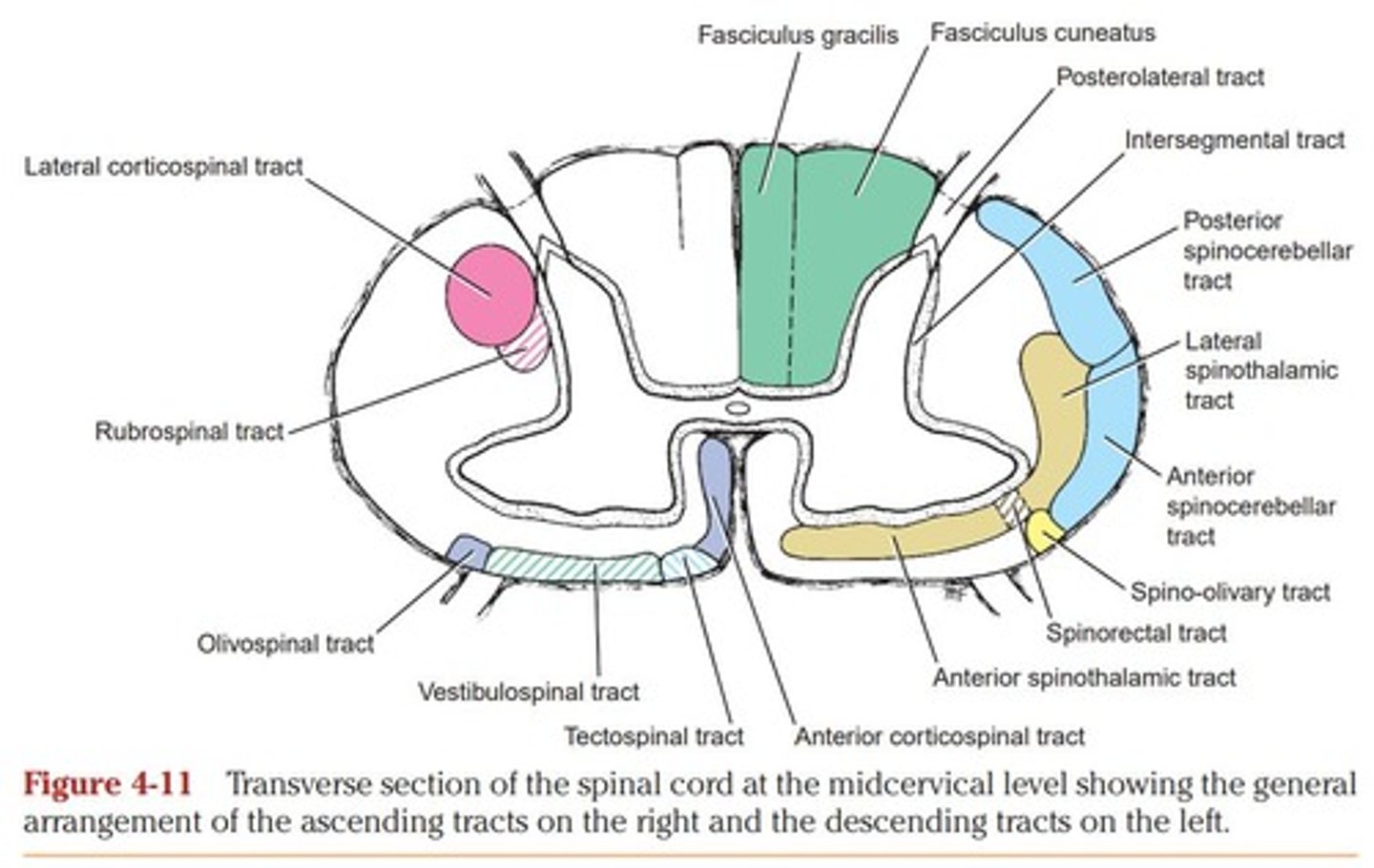
What is the composition of the white matter in the spinal cord?
It consists of a mixture of nerve fibers, neuroglia, and blood vessels.
What gives the white matter its color in the spinal cord?
The white color is due to the high proportion of myelinated nerve fibers.
What are the two groups of information conducted by the ascending tracts of the spinal cord?
Exteroreceptive (originates from outside the body) and Proprioceptive (originates from inside the body).
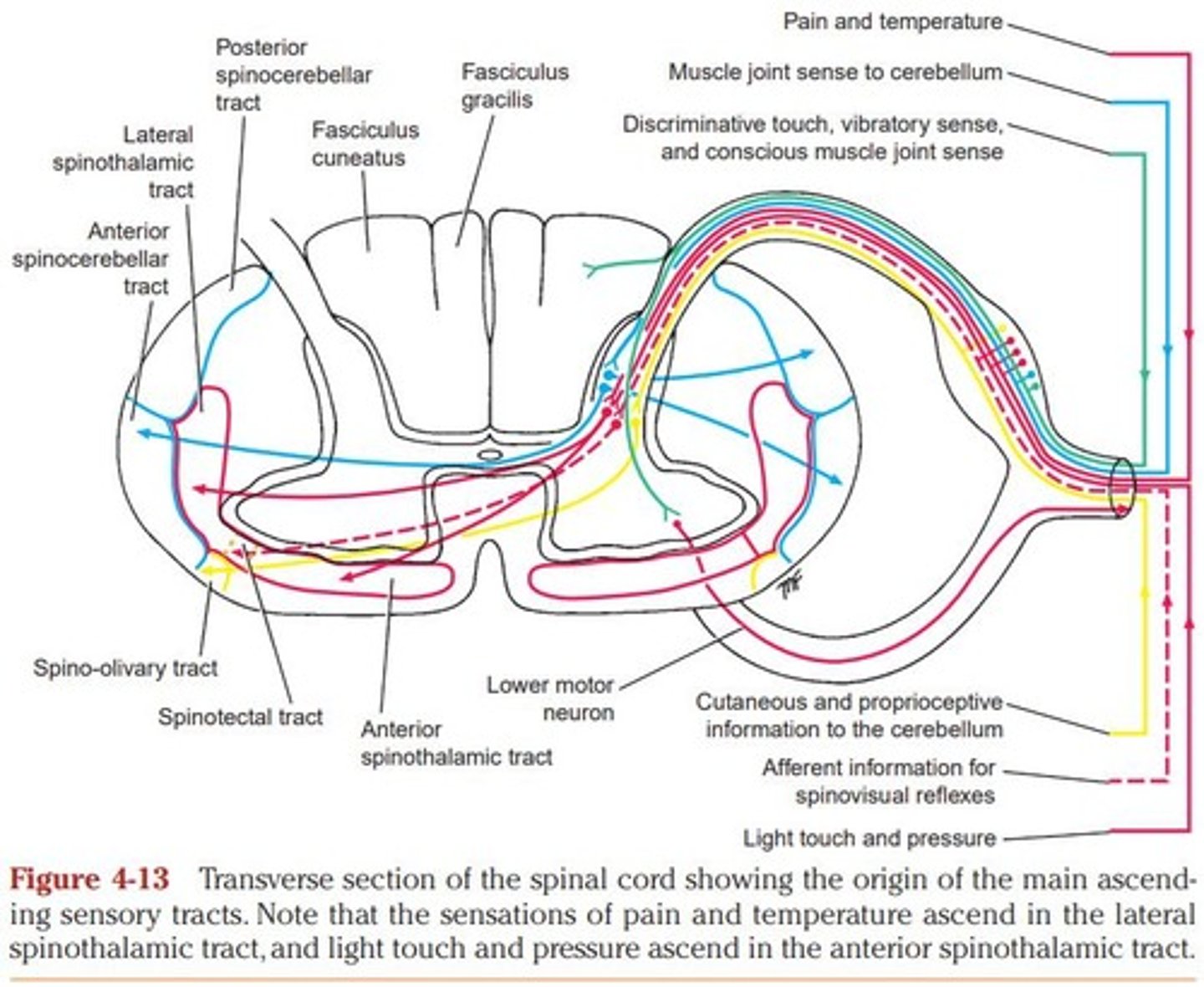
What is the role of the 2nd order neuron in the ascending tracts of the spinal cord?
It gives rise to an axon that decussates (crosses to the opposite side) and ascends to a higher level of the central nervous system, where it synapses with the 3rd order neuron.
Where is the 3rd order neuron typically located in the ascending tracts?
Usually in the thalamus, giving rise to a projection fiber that passes to a sensory region of the cerebral cortex.
What does the Lateral Spinothalamic Tract convey?
Pain and temperature sensations.
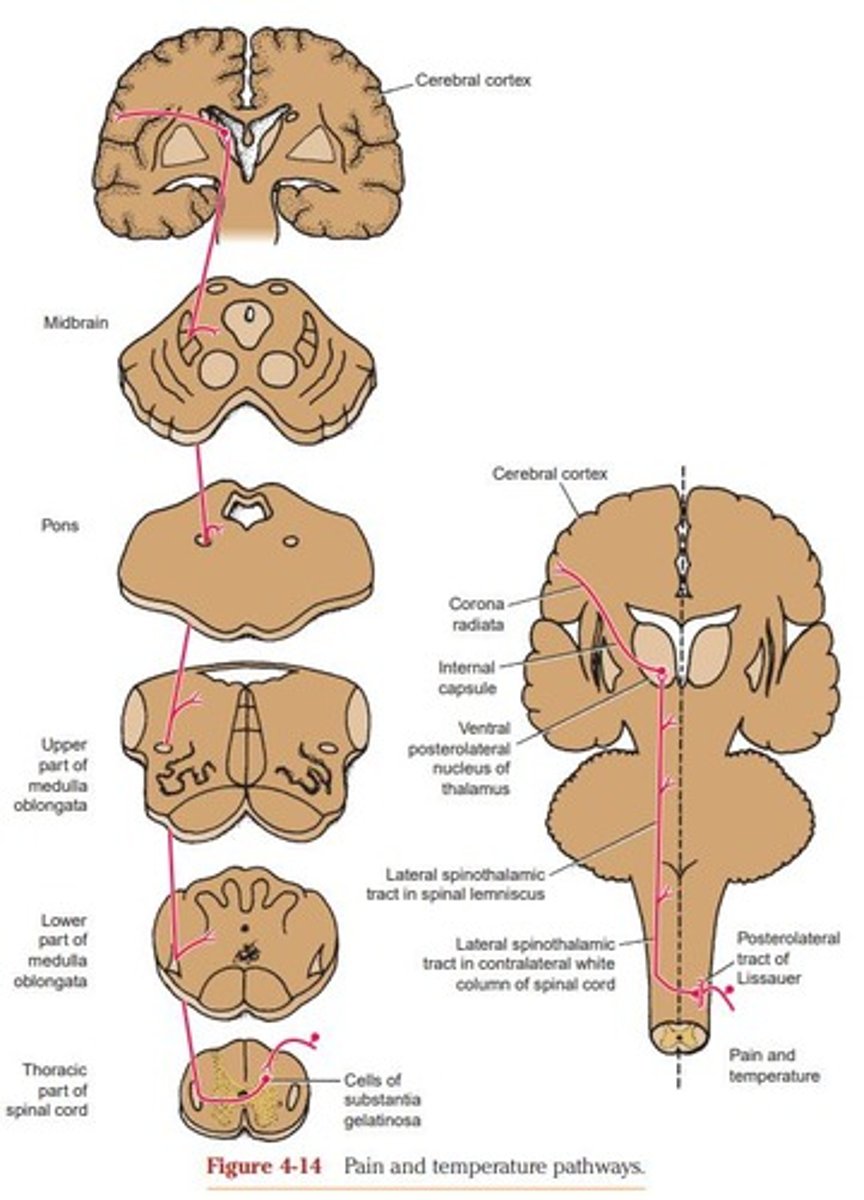
What sensations does the Anterior Spinothalamic Tract transmit?
Touch and pressure.
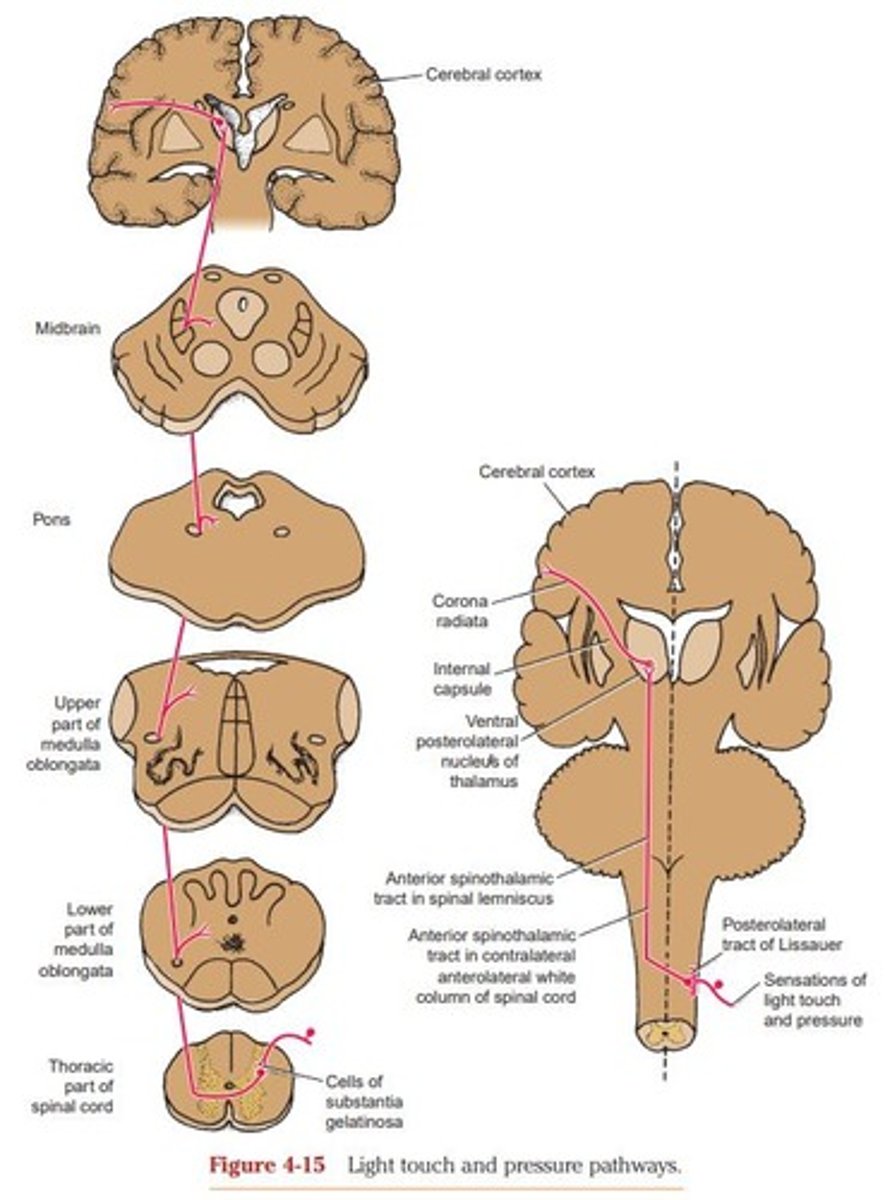
What type of sensations does the Posterior White Column convey?
Discriminative touch and vibration.
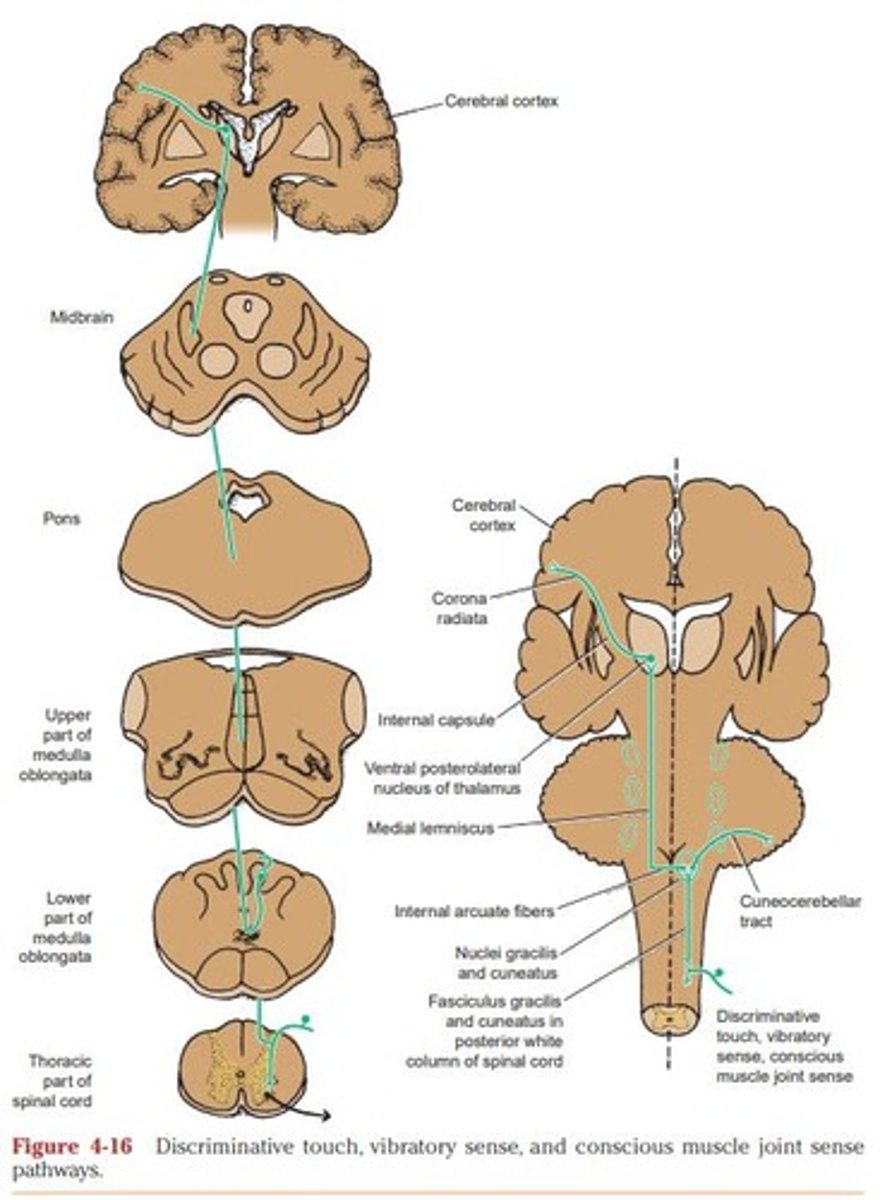
Describe the pathway of the Lateral Spinothalamic Tract from the posterior root ganglion to the cerebral cortex.
Posterior root ganglion → Ascending and Descending Branches → Synapse with 2nd order neuron → Cross to opposite side → Ascend as Lateral Spinothalamic Tract → Synapse with 3rd order neurons in the thalamus → Somesthetic area in the postcentral gyrus.
What is the pathway of the Anterior Spinothalamic Tract?
Posterior root ganglion → Ascending and Descending Branches → Synapse with Substantia Gelatinosa → Cross to opposite side → Ascend as Anterior Spinothalamic Tract → Synapse with 3rd order neuron in the thalamus → Somesthetic area in the postcentral gyrus.
What do the Fasciculus Gracilis and Fasciculus Cuneatus convey?
Discriminative touch, vibratory sense, and conscious muscle joint sense.
What is the pathway for the Posterior Spinocerebellar Tract?
Posterior Root Ganglion → Posterior Gray Column → 2nd order neuron at nucleus dorsalis → Ascend ipsilaterally → Inferior Cerebellar Peduncle → Cerebellar Cortex.
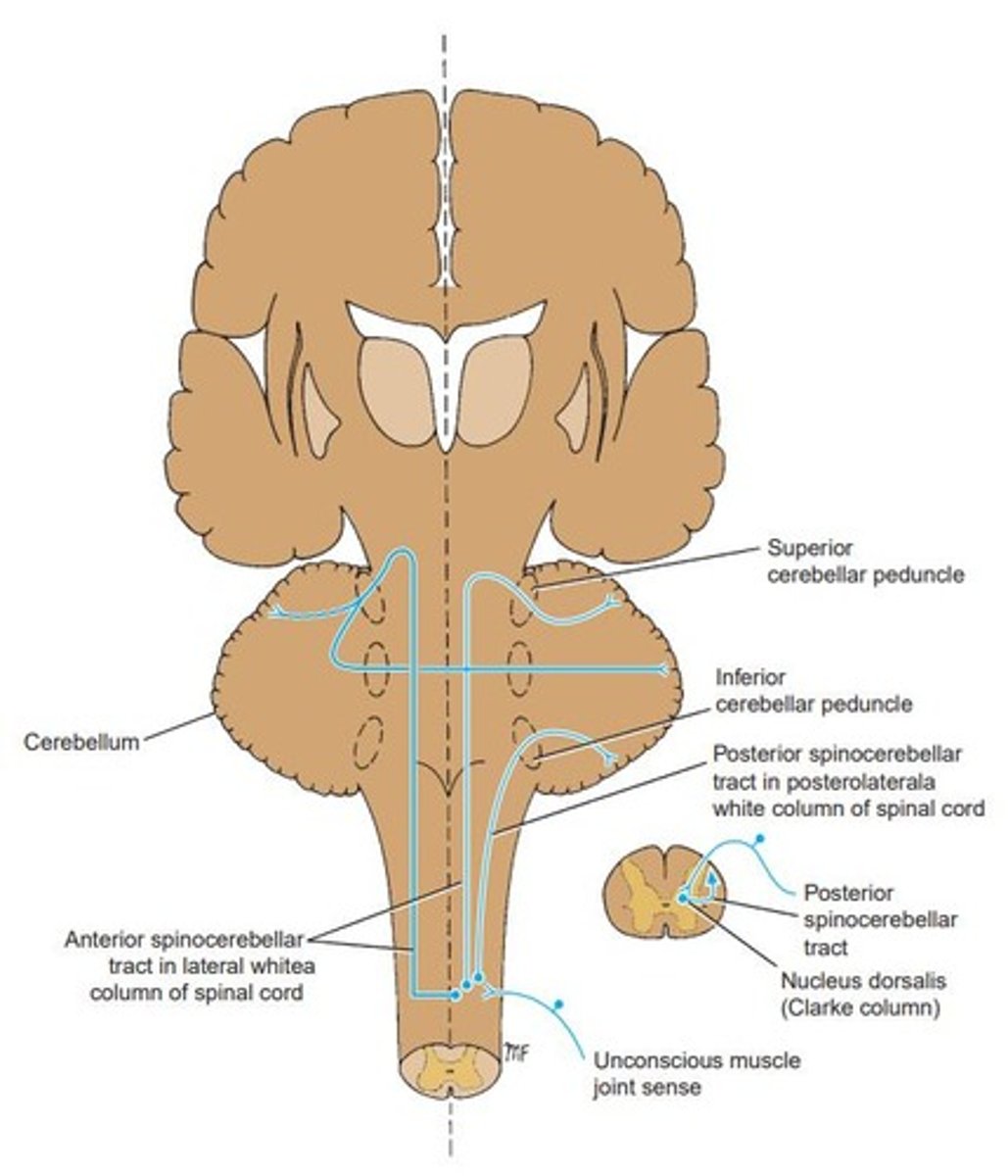
What information does the Anterior Spinocerebellar Tract convey?
Muscle joint information from the trunk and limbs, including information from skin and superficial fascia.
What is the role of the Cuneocerebellar Tract?
To convey information of muscle joint sense to the cerebellum.
What is the function of the Spinotectal Tract?
Provides afferent information for spinovisual reflexes and movements of the eyes and head toward the source of stimulation.
What does the Spinoreticular Tract influence?
It provides an afferent pathway for the reticular formation, influencing levels of consciousness.
What is the pathway of the Spino-Olivary Tract?
Posterior Root Ganglion → Unknown 2nd order neuron → Cross to opposite side → Ascend as spino-olivary tract → Inferior Olivary Nuclei → Cerebellum.
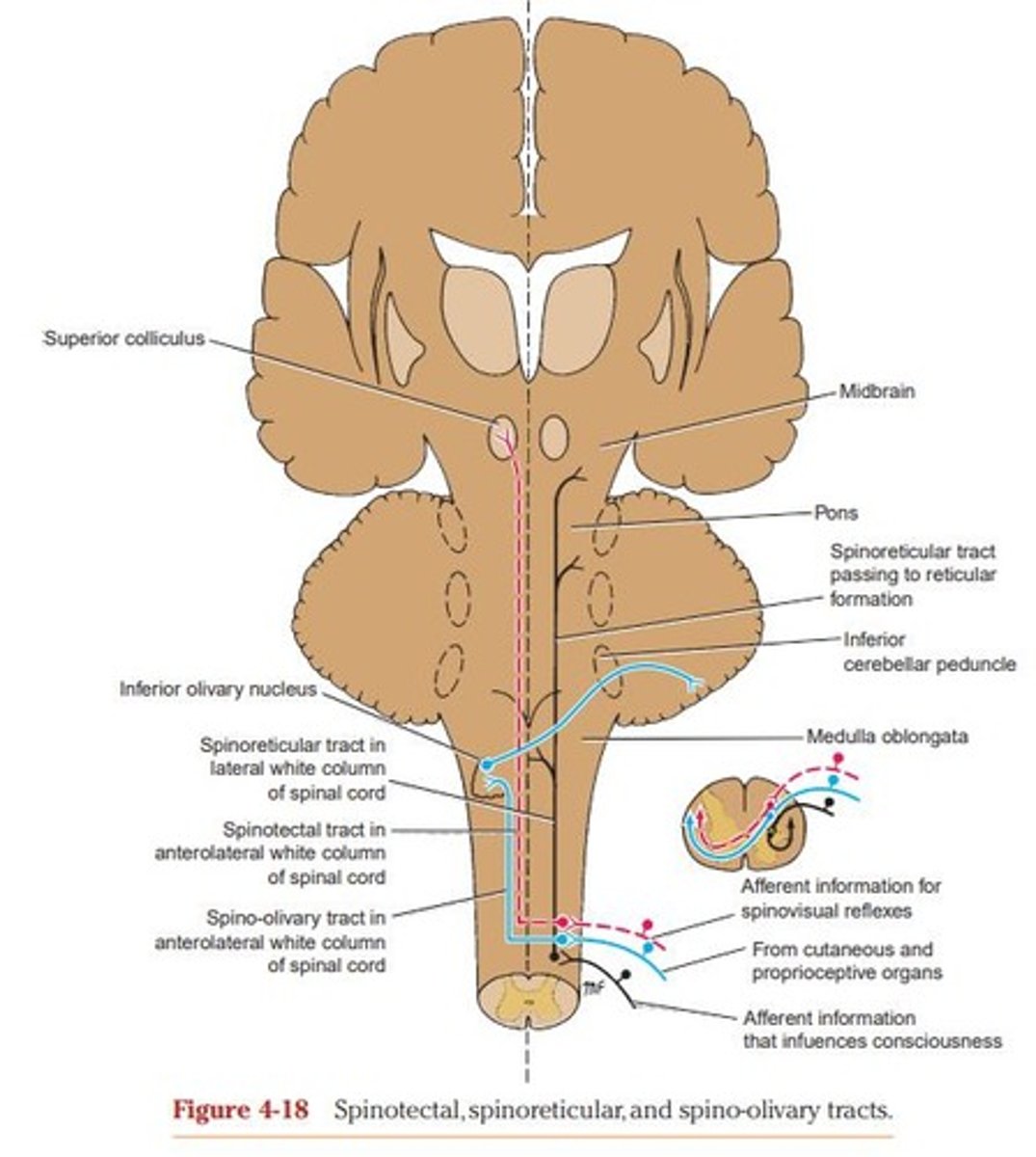
What type of information does the Spino-Olivary Tract convey?
Information from cutaneous and proprioceptive organs to the cerebellum.
What is the significance of the Posterolateral tract of Lissauer in the Lateral Spinothalamic Tract pathway?
It allows the first-order neuron to travel for a distance of 1 or 2 segments of the spinal cord before synapsing.
What is the role of the Substantia Gelatinosa in the Anterior Spinothalamic Tract?
It is where the 1st order neuron synapses with the 2nd order neuron.
What are the components of the Posterior White Column?
Fasciculus Gracilis and Fasciculus Cuneatus.
What is the function of the Inferior Cerebellar Peduncle in the context of the ascending tracts?
It is the pathway through which information from the cuneocerebellar tract enters the cerebellum.
What is the anatomical organization of the ascending tracts of the spinal cord?
They consist of first-order, second-order, and third-order neurons that relay sensory information to the brain.
What is the significance of the decussation of the 2nd order neurons?
It allows sensory information from one side of the body to be processed by the opposite side of the brain.
How do the ascending tracts contribute to sensory perception?
They relay sensory information from the body to the brain, enabling the perception of pain, touch, temperature, and proprioception.
What is the relationship between the Lateral Spinothalamic Tract and the Anterior Spinothalamic Tract?
They both carry different types of sensory information (pain/temperature and touch/pressure, respectively) and ascend together in the spinal cord.